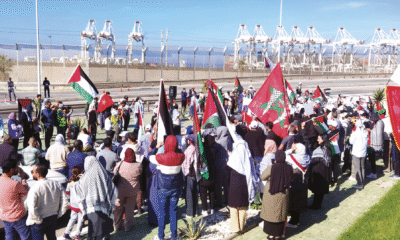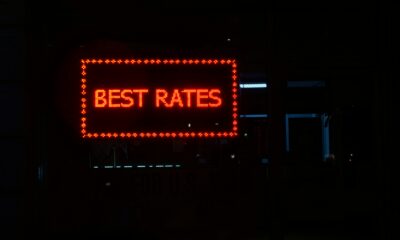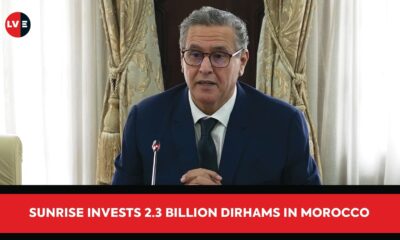Business
Three Ports, Three Economic Corridors
While the Chinese have chosen to set up their industrial platform near Tangier Med in order to access the European and American markets, their Indian and Western neighbours have clearly opted for Nador West Med as a relay in the IMEC project. The port of Dakhla Atlantique will be the Sahel countries’ gateway to the world

A few months ago, when Gérard Mestrallet, President Macron’s special envoy for the IMEC project, visited Morocco, some economic analysts were still wondering about Morocco’s chances of joining the corridor, while pointing out the challenges it would face in the process. The infrastructure was considered to be the main obstacle.
Since then, the scenario has evolved. Today, the Kingdom has three world-scale ports, with the first flourishing in line with its ambitions, the second on the point of reaching its operational phase while the third is advancing rapidly.
Dakhla Atlantique is served by a 1,055 km expressway, which is now almost completely open to traffic. The port of Nador West Med, where construction work has been completed, has a connection to the national highway network, and a rail service project launched by the ONCF.
Along with Tanger Med, the three ports share a common transhipment vocation, complementing each other in terms of container handling volume, but each has its own specific features.
Designed as an energy hub, Nador West Med is a logical component of the IMEC corridor, both for transhipment needs and for supplying ships with environmentally-friendly fuel, e-fuel, which will be produced in the Kingdom as part of the green hydrogen project. Initially intended to become a logistics and energy hub in the conventional sense, i.e. for gas and oil, the long-term vision is to turn Nador West Med into a maritime bunkering hub for alternative energies.
Capitalising on Morocco’s green hydrogen production sector, the port will develop infrastructures for e-methane and e-methanol, targeting dual-fuel gas and methanol ships, thereby strengthening its role in the sustainable energy sector within the Mediterranean region.
One of the first signs of the port’s link-up with the IMEC logistics and trade corridor is the recent establishment of a strategic joint venture between CMA-CGM and Marsa Maroc to operate half of a container terminal for 25 years.
“Morocco is positioning itself as a strategic logistics and port hub with strong growth potential” said Rodolphe Saadé, CEO of the CMA-CGM Group, when the partnership was signed.
Indeed, Morocco’s unique geographical location makes it ideally positioned to play a central role in this IMEC project, as a major transit hub between Europe, the Middle East and Africa. Through its involvement in the African Continental Free Trade Area (AfCFTA), Morocco can strengthen its standing as a major logistics hub and enhance trade and investment between the different zones.
Regional stability
Just a couple of years ago, Morocco joined China’s ‘Belt and Road’ initiative, and has already become one of its key players.
During his brief visit to the Kingdom, the Chinese president affirmed that “China is willing to work with Morocco to promote practical cooperation in various fields within the framework of the joint construction of the ‘Belt and Road’ to achieve greater results”.
A cooperation framework which has already given the country easier access to the European, North American and West African markets, through the various Free Trade Agreements the Kingdom has signed up to with countries in these regions.
Clearly, this is a significant argument. But it isn’t sufficient on its own. Infrastructure comes into the equation, especially the Tanger Med port complex. The decision by Chinese operators to set up in the Tanger Tech technology park, which has been specially designed for this purpose, is no coincidence.
Other large-scale projects, notably the battery gigafactory, will be based close to the north of Kénitra. Barely a year ago, China’s largest shipping company stated its intention to expand its investments in the maritime sector and further develop its activities in the Kingdom, emphasising “the importance of Morocco’s position as a continental and regional logistics hub”.
In addition, as was emphasised when this initiative was announced, the port of Dakhla Atlantique will be the connection point between the economies of the four Sahel countries and the rest of the world, as part of Morocco’s decision to provide access to the Atlantic for the countries of Mali, Niger, Burkina Faso and Chad.
The port is 27% completed and will be operational in 2028. The development of this economic corridor is also progressing rapidly. “The project is entering its operational phase”, as stated during recent interviews between the heads of diplomacy of Burkina Faso, Mali, Chad and Niger and the Minister of Foreign Affairs, Nasser Bourita.
The foreign ministers of the five countries have also agreed to hold a meeting in the near future as part of the ongoing operationalisation of this International Initiative. It goes without saying that this major initiative, as well as being economic in nature, represents a major asset for regional stability in this tormented area of Africa.
Dakhla’s future port also plays a major role in a separate process, the Atlantic Africa Initiative, acting as a regional hub for West African trade.













